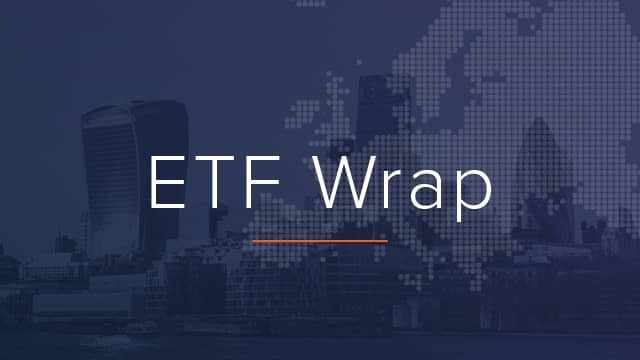HSBC Asset Management became the latest issuer to launch a biodiversity-related ETF this week, but question marks remain as to how furthering biodiversity can be achieved in a diversified and investable exposure.
The HSBC World ESG Biodiversity Screened Equity UCITS ETF (HBDV) tracks the Euronext ESG Biodiversity Screened World USD index, a joint venture with Iceberg Data Lab, a biodiversity specialist which also provides some of the data underlying the Ossiam Food For Biodiversity UCITS ETF (F4DU).
HBDV’s benchmark captures the top 500 companies from the Euronext World index in terms of Corporate Biodiversity Footprint and Sustainalytics ESG risk score.
The ETF also aims to beat the biodiversity footprint of its parent benchmark by around 35% by screening out companies involved in animal testing, palm oil production, pesticide production and whaling – as well as the usual suspects of ESG exclusions such as thermal coal and oil sands extraction.
The additional screens for biodiversity are certainly meaningful, however, they may not go far enough for some.
For instance, the ETF’s benchmark draws from the principles of the Taskforce on Nature-related Financial Disclosure (TNFD), which encourages corporates to disclose activities relating to ecosystem degradation, biodiversity loss and indirect drivers such as water usage, water and land pollution, air pollution and waste generation.
Taking these tenets and some inspiration from the UN’s Sustainable Development Goals regarding life on land and in water, one might expect additional explicit screens against companies engaged in any form of deforestation, trawling, gas flaring and harmful substance spills.
Euronext does factor in environmental supply chain incidents, operations incidents and product and service incidents into its exclusionary criteria in some manner, however, its index includes companies with no shortage of biodiversity risk upstream or downstream in their supply chains.
These include agricultural specialists such as Deere and Co, construction and industrial companies and asset management names such as S&P Global, Nikko Asset Management and Nomura, whose products often directly channel investment into companies that on their own would be excluded from Euronext’s biodiversity benchmark.
Overall, HBDV should be given some quarter for not investing directly in the worst offenders – and it certainly does a better job of this than Ossiam’s F4DU, whose top ten allocations include McDonalds and Ahold Delhaize – which in recent years have partnered with Cargill, which is among the largest contributors to deforestation in Latin America, according to the NGO Mighty Earth.
In future, it would be good to see more attempts being made at biodiversity impact ETFs capturing the likes of recycling companies, water and waste management companies, eco-tourism and meat alternative manufacturers.
The TNFD also suggested corporates should be rewarded for positive biodiversity impact. ETF issuers may consider rewarding companies that actively use recycled materials in their products or those spending on reforestation, among other activities.
Compartmentalising risk
PIMCO has introduced the option of side pockets to segment Russian sovereign debt exposure from the rest of the baskets in its emerging market bond, euro low duration corporate and euro short maturity ETFs.
The decision follows regulators such as the Financial Conduct Authority (FCA) and Central Bank of Ireland authorising the use of side pockets in July for UCITS funds for assets directly impacted by the Russian invasion of Ukraine.
The side pocket mechanism allows issuers to separate illiquid assets into a new unit class, meaning they are valued differently from the rest of the fund – which allows existing shareholders to redeem the more liquid portion of the basket and new investors to enter without being exposed to illiquidity.
Last month, Schroders became the first asset manager to utilise the new side pocket rule. Most commonly used by hedge funds to siphon off ‘hard-to-value’ securities, the mechanism has been treated with suspicion by regulators in fear active managers might be encouraged to make riskier investment decisions.
Are thematics becoming too generalist?
Following the liquidity and over-concentration risks faced by BlackRock’s headline-grabbing clean energy plays, S&P Dow Jones Indices created a new benchmark for the ETFs with a higher market cap threshold, higher minimum daily trading volume requirements and triple the number of target constituents.
Little over a year later, BlackRock’s water, agribusiness and timber and forestry ETFs look set to undergo similar overhauls – to broader baskets of larger companies – as SPDJI consults the market on giving their underlying indices similar makeovers.
Earlier this week, ETF Stream also reported on a paper from Industry Ventures, which found tech companies take on average twice as long to list as they did in 1989, with three times the annual revenue and up to six times the size of their predecessors – meaning ETFs are having to wait increasingly longer to capture the growth stories of potential future disruptors.
A question many investors will have to ponder is whether this progressive trend towards capturing more and more mature companies undermines the use case of thematic ETFs – as tools for capturing future winners – or whether the added safety of the rules-based approach is a worthy trade-off for missing companies’ early growth phase.
ETF Wrap is a weekly digest of the top stories on ETF Stream
Related articles












